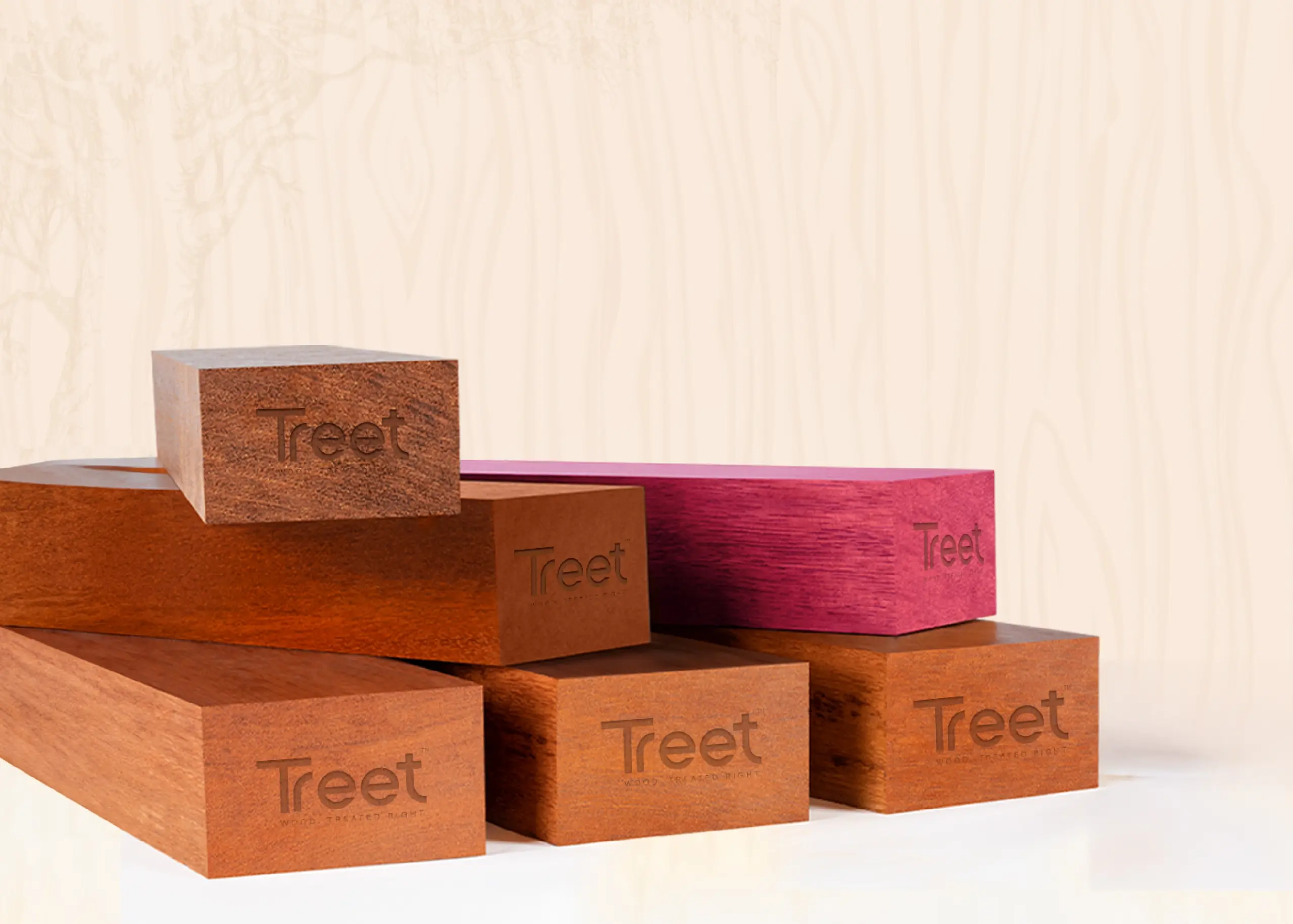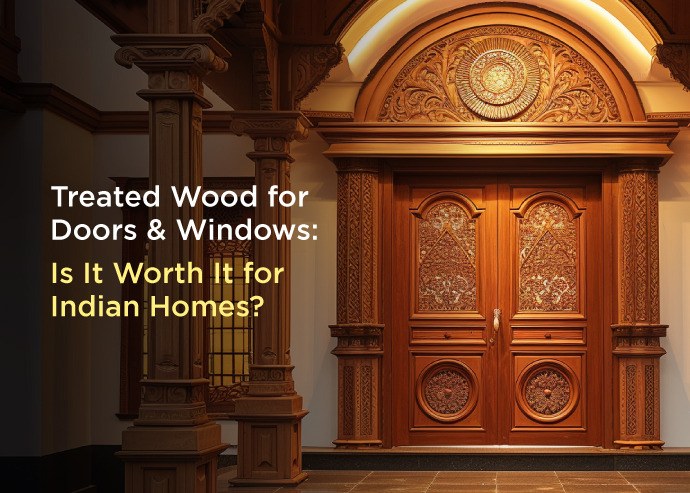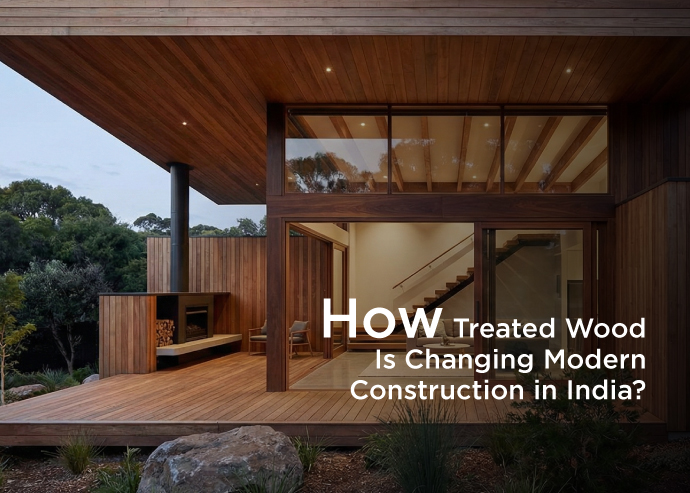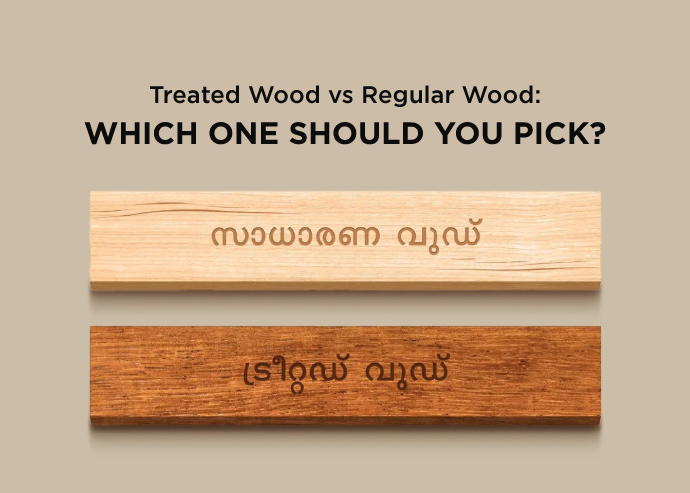Blog Details

Treated Wood vs Steel; Why You Should Choose Treated Wood Over Steel
In India, strength alone isn’t enough when you’re building something that needs to last. Materials have to handle heat, rain, humidity – and still look good for years.
Steel seems like a solid option. It’s strong, modern, and widely used for doors, windows, and even interiors in many Indian homes. But when you consider the full range of uses like gates, railings, fences, outdoor seating, ceiling frames, etc. treated wood often makes more sense.
It’s easier to work with, stands up better to the elements, and brings a warm, natural feel that suits both traditional and modern Indian aesthetics.
In this blog we will discuss about,
- A real-world comparison between treated wood and steel
- Which material performs better outdoors in India
- Cost, maintenance, and handling differences
- Design and environmental benefits
- Why treated wood from Treet is the smarter choice
Let’s break it down.
Cost Comparison Treated Wood vs Steel
At first glance, steel might seem like a longer-lasting option. But the truth is, steel ends up being more expensive over time. While treated wood is usually more costly upfront, the real difference shows up in maintenance.
Steel structures need regular upkeep. Without proper coatings, steel is prone to rust – especially in coastal and high-humidity regions. Painting, galvanising, and welding repairs all add up. These are recurring costs every few years.
Treated wood, on the other hand, only needs basic upkeep. Occasional sealing or staining is enough to keep it in good shape for decades. No rust. No complex repair work. And because it’s easier to work with, installation is faster and labour costs are lower.
| Material | Long-Term Cost | Notes |
| Treated Wood | Lower (minimal maintenance) | More economical overall |
| Steel | Higher (coating, repairs, labour) | Fabrication and upkeep add to cost |
Durability and Indian Weather
India’s climate is tough. From coastal humidity to monsoon rains and dry heat, your materials have to handle it all. Steel may seem indestructible, but it rusts over time, especially in coastal or high-humidity areas. Treated wood, on the other hand, is designed to resist moisture, rot, and pests. With basic maintenance, it can last 20 – 50 years.
| Factor | Treated Wood | Steel |
| Moisture Resistance | High (with treatment) | Prone to rust without coating |
| Pests | Resists termites & borers | Immune, but still vulnerable to rust |
| Lifespan | 20–50 years (with care) | Long, but only with coatings and upkeep |
Environmental Benefits
Treated wood is a renewable material, sourced from responsibly managed forests. It stores carbon during its lifetime and requires less energy to process than steel. Steel is recyclable, yes, but its production is energy-intensive and leaves a much larger carbon footprint.
| Factor | Treated Wood | Steel |
| Renewability | Yes (from certified forests) | No |
| Energy Use | Low | High |
| Carbon Footprint | Low (even negative) | High (especially at manufacturing) |
Design & Handling
For Indian homes, especially in residential or traditional settings, treated wood blends better. It feels warm, natural, and can be easily matched with other wooden elements like doors, rafters, or furniture. It’s also much easier to work on-site. Steel needs welding, grinding, and careful handling – which adds cost and complexity.
| Factor | Treated Wood | Steel |
| Look & Feel | Natural, warm, blends well | Industrial, modern, can feel cold |
| Workability | Easy with basic tools | Needs specialised tools and labour |
| Repairs | Simple | Difficult and expensive |
Practical Tips for Treated Wood in India
- Use the right treatment: For outdoor or ground contact, make sure the wood is chemically-treated and kiln-dried.
- Buy from reliable sources: Treet offers treated wood tested and prepared specifically for Indian conditions.
Conclusion: What Should You Choose?
If you’re building in India, treated wood offers the best balance of cost, durability, beauty, and ease of use. Steel has its place, especially for high-load structural needs, but for most day-to-day projects at home, treated wood wins hands down.
And when it’s Treet Treated Wood, you’re not just getting solid timber. You’re getting:
- Strong, naturally durable hardwoods
- Multi-stage treatment for long life
- A natural finish that ages beautifully
- Better value over time
Smart builds start with smart materials. Choose wood that works. Choose Treet.




